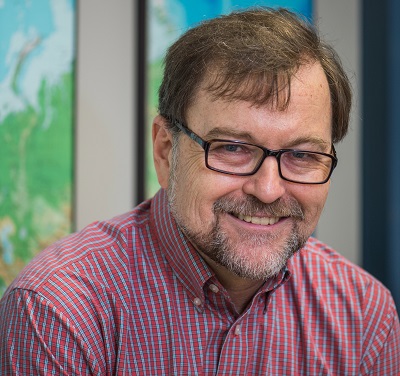Potential Fields SIG: True Polar Wander and the Origin of the Hawaiian-Emperor Bend: New Evidence* - Jan 18th

Meeting Location:
HESS Club (Houston Engr. & Science Society)
5430 Westheimer
Houston, TX 77056
NOTE: You Must Be Logged In to Register
Speaker: Richard G. Gordon, Rice University
Co-Authors: Daniel Woodworth, Lily Seidman, and Lin Zheng Department of Earth Science, Rice University
It may not be well appreciated that skewness (asymmetry) analysis of marine magnetic anomalies due to seafloor spreading can be used to obtain Pacific plate paleomagnetic poles with high age resolution and compact confidence limits. We present an updated apparent polar wander (APW) path for the Pacific plate constructed from paleomagnetic poles determined from the skewness of marine magnetic anomalies, from equatorial sediment facies, and from paleocolatitudes of vertical cores of igneous rock. While paleocolatitude data provide some constraints, their usefulness is limited because they only limit the pole position in one direction, and the uncertainty in that direction is large because of the challenges of averaging secular variation. In contrast, secular variation contributes negligibly to the poles from skewness data, which give compact confidence limits for a well-defined interval of time. We review, update, or present six useful poles available for chrons 12r, 20r, 25r, 26r, 27r-31, and 32, corresponding respectively to 32 Ma, 44 Ma, 58 Ma, 60 Ma, 65 Ma, and 72 Ma.
An APW path for Pacific hotspots can be obtained by moving each Pacific plate paleomagnetic pole with the Pacific plate relative to the hotspots to a reconstruction that corresponds to the age of the pole. This path has a stillstand from 44 Ma to 12 Ma at a location (P1) about 3° from the present spin axis and a second stillstand from 81 Ma to 58 Ma at a location (P2) about 11° from the present spin axis. We hypothesize that the shift from P2 to P1 records an episode of true polar wander sometime between 58 and 44 Ma and that the shift from P1 to the present spin axis records another episode of true polar that has occurred since 12 Ma and may continue today. We test these hypotheses by comparing the APW path of Pacific hotspots with the APW path of Indo-Atlantic hotspots and find them in agreement. Our results imply that global hotspots have moved in unison with respect to the spin axis and that the Hawaiian-Emperor Bend (HEB) does not record a change in motion through the mantle of the Hawaiian plume. Instead the HEB records a change in Pacific plate motion over a stationary plume as originally proposed by W. J. Morgan.
Speaker Biography: Richard G. Gordon, Rice University
Dr. Richard G. Gordon is the Keck Professor of Geophysics at Rice University where he also served 5 years as Department Chair. Before moving to Rice in 1995, but after receiving his Ph.D. in Geophysics from Stanford University in 1979, he successively served as Assistant Professor, Associate Professor, Professor, and Department Chair at Northwestern University. Dr. Gordon has contributed greatly to our understanding of the dynamic solid Earth, in particular plate tectonic and regional tectonic processes, lithospheric deformation, and true polar wander, through his research involving paleomagnetic, marine geophysical, space geodetic, and seismological data. His fieldwork includes land-based paleomagnetic investigations in North America and ship- and airplane-based investigations in the Pacific and Indian Oceans. Together with students and colleagues, he developed the widely used NUVEL-1 and MORVEL sets of plate relative angular velocities. He has published about one hundred papers in refereed journals and co-edited one book. He is a highly cited geoscientist and has received many awards including a Sloan Fellowship, the Macelwane Medal of the American Geophysical Union (AGU), and the Day Medal of the Geological Society of America (GSA). He has served both the AGU and GSA in leadership positions, has performed many editorial duties, including being an Editor of the Journal of Geophysical Research. He currently serves on the Honors and Recognition Committee of the AGU and as an Associate Editor of Terra Nova.
5:30 Registration / Cash Bar
6:15 Dinner Served
7:00 Presentation Begins
8:00 Adjourn
Price List:
|
Pre-Registered |
Late/Walk-Up
|
Member
|
$35 |
$45 |
| Non-Member |
$40 |
$50 |
Student Member
|
$15 |
$25 |
*HESS Club requires 3 days notice for a vegetarian dinner order. Please make request below, thank you.